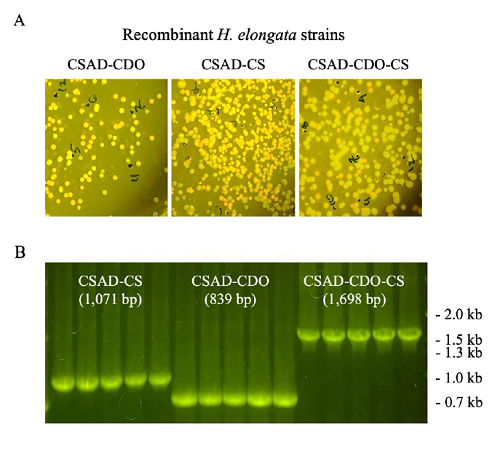Taurine Production in Engineered Halomonas elongata
Keywords:
Taurine, Feed additives, Essential amino acids, Cysteine, Halomonas elongataAbstract
Taurine (Tau) is a conditionally essential amino acid in fish diet. Dietary supplementation of Tau in fish feed improved their survival rate, growth rate, protein and energy retention, metabolism, antioxidation response, stress response, disease resistance, muscle texture, and reproductive performance. Therefore, Tau is added to plant-protein-based fish feed due to the absence of Tau in plant protein. Halomonas elongata OUT30018 is a moderately halophilic bacterium with the ability to utilize a wide range of sugars and amino acids, including the putrefactive non-volatile amines such as histamine and tyramine derived from biomass waste as carbon (C) and nitrogen (N) sources for cell growth. The work presented here aims to generate a Tau-producing H. elongata cell factory to be used as a single-cell aquaculture feed additive. In bacteria, Tau is synthesized via two pathways: the L-cysteine (L-Cys) sulfinic acid pathway, mediated by the L-Cys dioxygenase (CDO) and the Cys sulfinic acid decarboxylase (CSAD) enzymes and the L-Cys sulfonic acid pathway, mediated by the L-Cysteate synthase (CS) and the CSAD enzymes. To compare the efficiency of these pathways, the expression cassettes encoding the codon-optimized artificial genes encoding these enzymes were introduced into the genome of H. elongata OUT30018 to generate H. elongata CSAD-CDO, CSAD-CS, and CSAD-CDO-CS strains. Subsequently, the amount of Tau accumulated in the three recombinant strains cultured in the M63 minimal media containing 4% glucose, 3% w/v NaCl, and 5 mM Cys were compared by HPLC analysis. Our result shows that H. elongata CSAD-CDO, expressing the enzymes of L-Cys sulfinic acid pathway, was the only strain that successfully accumulated Tau in the cells. Currently, we are conducting tests to determine if the H. elongata CSAD-CDO can grow and produce Tau when cultivated in a medium made from Cys-rich biomass waste, such as wool and chicken feathers. The use of H. elongata CSAD-CDO cells grown in Cys-rich biomass waste medium as a single-cell Tau-rich feed additive could decrease costs and improve the sustainability of the aquaculture feed industry.

